This story from the Australian Aviation archives is from August 2009, when Andrew McLaughlin wrote about the unveiling of the first F/A-18F Super Hornet for the Royal Australian Air Force (RAAF) at Boeing’s St Louis facility a decade ago in July 2009.
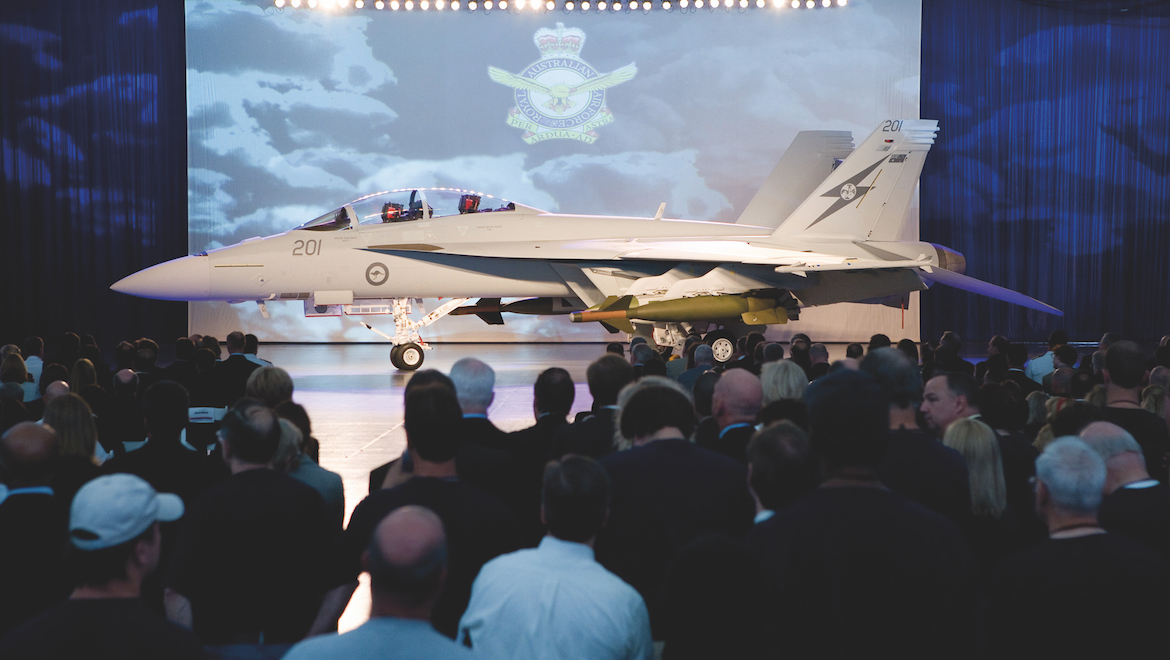
The first of 24 F/A-18F Super Hornets for the Royal Australian Air Force (RAAF) was revealed at a rollout ceremony at Boeing’s St Louis facility on July 8 2009.
The ceremony (really a curtain unveiling in a hangar as opposed to a rollout in the literal sense of the term) was attended by Chief of Air Force, AIRMSHL Mark Binskin, Air Combat Transition Office (ACTO) head and future officer commanding of 82WG, GPCAPT Steve Roberton, and 1SQN commanding officer, WGCDR Glen Braz, plus about 1,500 Boeing officials and workers including Boeing Integrated Defense Systems president Jim Albaugh, members of 1SQN currently based at NAS Lemoore in California for conversion to the aircraft, and the Mayor of St Louis, Francis Slay.
“This is a very proud moment,” AIRMSHL Binskin told the assembled crowd after the aircraft was unveiled. “This is a true multirole aircraft that spans the air combat spectrum . . . the men and women of 1SQN can’t wait to get their hands on the ‘Rhino’.”
The US Navy has dubbed the Super Hornet “Rhino” so as to avoid confusion with lighter “classic” Hornets in carrier operations, and AIRMSHL Binskin suggested this name may also stick for RAAF operations.
“I think we will adopt the Rhino moniker,” he said. “The aircrew will always come up with a nickname for the aircraft, and I think Rhino is a good name.”
The first aircraft, A44-201 (USN serial number 167957), was unveiled wearing the same two-tone light grey colour scheme as used on US Navy Supers (a noticeably lighter scheme than worn by the RAAF’s classic Hornet fleet), and featured 1SQN fin flashes on its vertical stabilisers and the final three numbers of its RAAF serial number painted prominently on the forward fuselage.
The first two jets initially will be operated by US Navy personnel for certification and validation work of the RAAF’s unique ILS equipment, and the whole fleet will be a common sight on US Navy flightlines at Lemoore, Fallon, China Lake and Patuxent River prior to their delivery flights to Australia over the next few years.
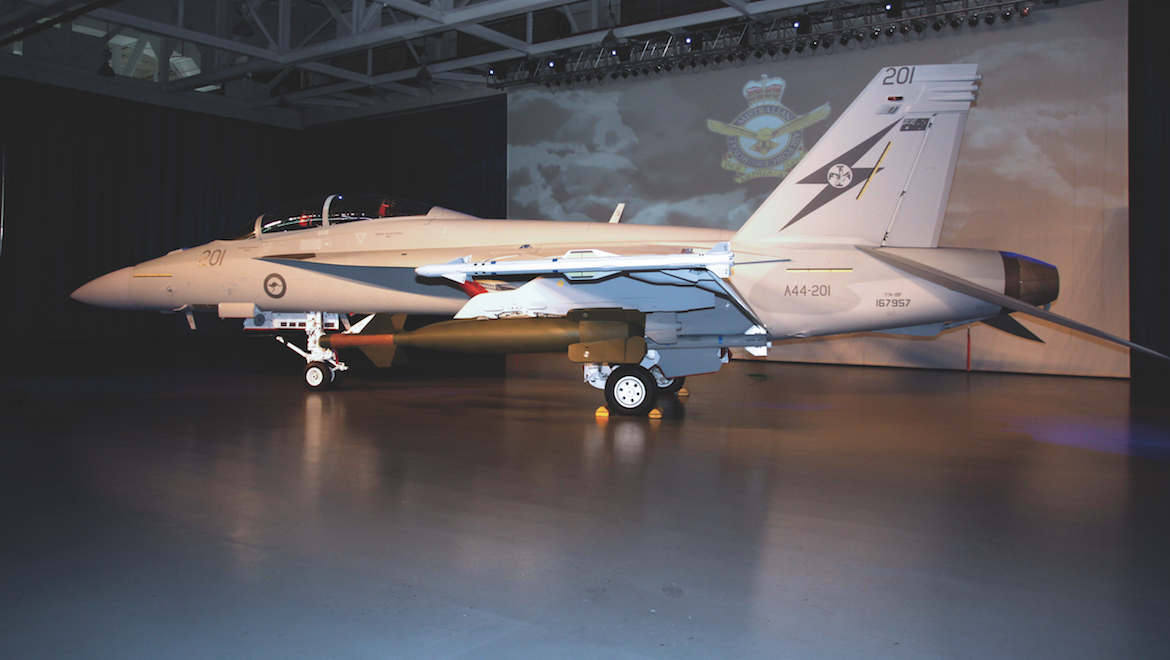
DELIVERIES
The RAAF’s A44-201 rolled out three months ahead of schedule. Boeing has consistently been able to build Super Hornets ahead of the US Navy’s multi-year procurement schedule, and thus had a sufficient buffer to allow it to allocate production slots intended for the USN to the RAAF while still meeting its contracted Navy delivery schedule.
A44-201 is the 394th Super Hornet to be built of a total of 441 currently on order for the RAAF and the US Navy, with the USN expected to order at least another 89 jets either in smaller yearly increments or as part of a larger multi-year buy.
With the July 8 rollout of -201, the second RAAF Super, A44-202 will follow in August, and then one each month will roll off the line at St Louis until the end of the year. The remaining six jets of the first (Lot 32) batch will come off the line next January, February, March, two in April and one in May.
They will be followed by the first four Lot 33 production jets, which will be completed in August, September, October and November 2010, with the final eight Australian Super Hornets to be built in January, February, two in March, April, June, and the final two, A44-223 and -224, in July 2011.
As announced earlier this year, all 12 of the RAAF’s Lot 33 Super Hornets will be fitted in production with some of the wiring and internal structures necessary to allow their future conversion to an EA-18G Growler electronic attack configuration, should that capability be required. The wiring weighs less than 100kg and incurs a less than two per cent range penalty, a seemingly small price to pay for the flexibility this may offer down the track.
If the Growler option is taken up, it is unlikely all 12 jets would be employed as such at once. Apart from having to acquire jammers, radar warning receivers and other hardware, additional work such as the installation of antennae, the removal of the gun and its replacement with additional avionics racks, and some other ‘plumbing’ would need to be performed on the aircraft. Boeing officials say this work would take about three weeks per aircraft, and could be done at Amberley.
Once the ILS certification work is complete, A44-201 and -202 will join -203 and -204 at NAS Lemoore where 1SQN’s initial cadre of pilots will prepare for the first delivery flight. Other aircraft will be stored at St Louis or Lemoore for various periods as they are completed ahead of schedule until the RAAF is ready to accept delivery.
In the meantime, 40 1SQN aircrew and maintenance personnel have been training with the US Navy’s VFA-122 Fleet Replenishment Squadron (the equivalent of the RAAF’s 2OCU) at NAS Lemoore in preparation for the delivery of the aircraft early next year and the ferry flights home. WGCDR Braz and other pilots are due to complete their conversion to the F/A-18F Block II by the end of July, at which time another rotation of pilots and ACOs will commence their conversion.
“We’ve already got a couple of guys qualified with the (US Navy) exchange program, and the first group will be qualified by the end of this month,” explained AIRMSHL Binskin. “The F-111 guys are bringing their strike expertise across.”
“The biggest comment coming out of the ex-F-111 crews is that they don’t have to run away from anything – they’ve got so many options they can just plough through now,” said GPCAPT Roberton.
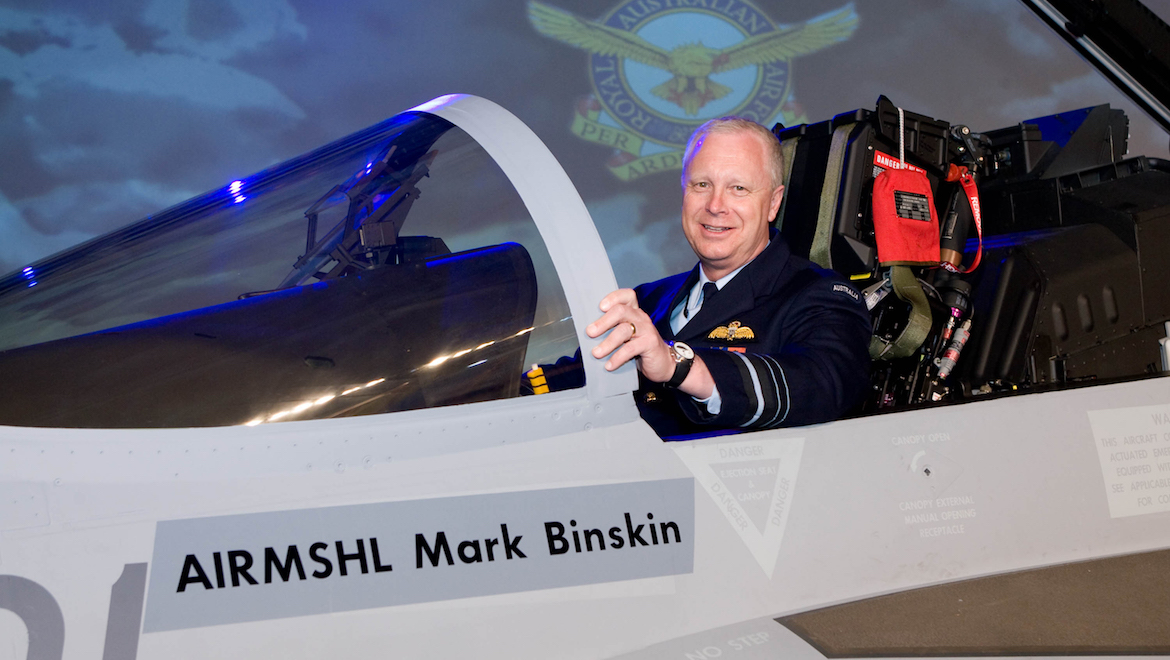
All 1SQN pilots will participate in live weapons employments at USN ranges such as those at NAS Fallon and China Lake as they build up their experience on the aircraft, its systems and the new weapons package that has been acquired as well.
Maintenance personnel have also been busy learning the aircraft’s systems alongside their US Navy counterparts at VFA-122. “The maintainers are really settling in well . . . they love the aircraft,” said AIRMSHL Binskin.
“They’ve all had some time on the classic, and they love this because the things that weren’t so slick on the classic have been fixed up on (the Super Hornet).”
Five delivery flights to Australia are currently planned for the 24 jets, with the first four aircraft coming across the Pacific from Lemoore to Amberley in March 2010, with the next six following in July. In 2011, six Super Hornets will be delivered in March, four in July, and the final four in October.
The RAAF has contracted Omega Air Services to conduct the first ferry flight which will, rather than being a non-stop affair like the first classic Hornet delivery in 1985, operate via Hawaii and Pago Pago.
The RAAF hasn’t revealed its plans for any commemoration events for the first delivery, but one would hope the RAAF’s Mirage escort of its first two F/A-18Bs in 1985 is repeated with a brace of F-111Cs escorting the first Super Hornets in as they approach Amberley next March.
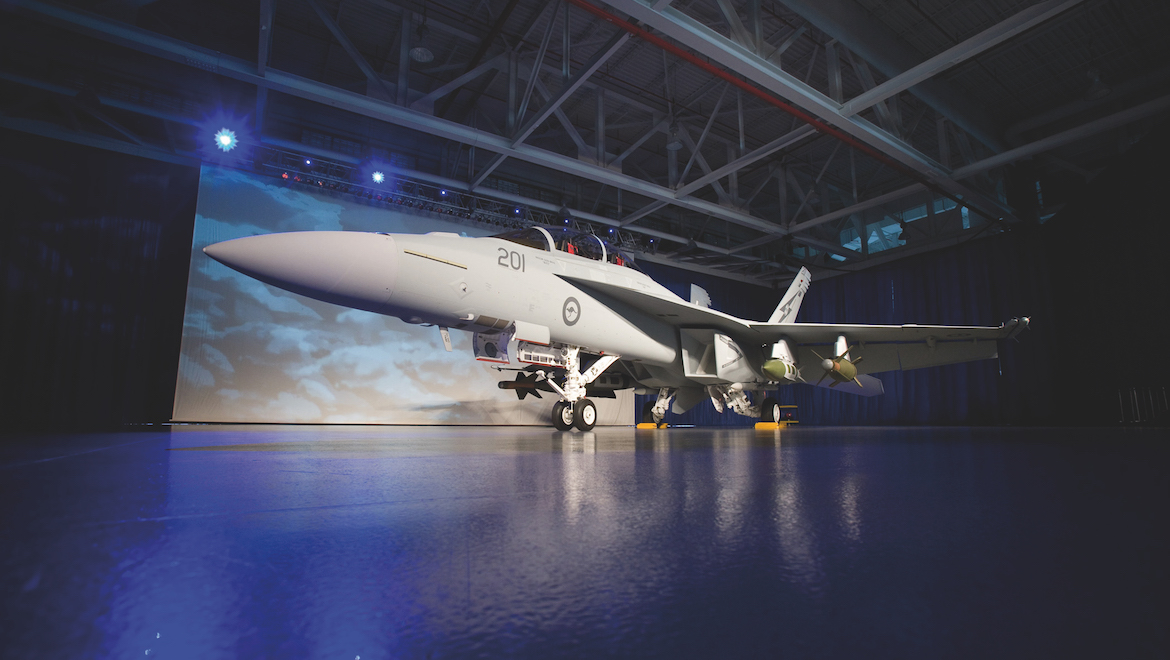
crossing the bridge
“One of the beauties of the Super Hornet was that it’s relatively easy to produce, we know the system well, and it will provide us with that flexibility to go with the JSF when we’re ready to go with the JSF,” said AIRMSHL Binskin.
Indeed, the Super Hornet acquisition means so much more to the RAAF than just providing a “bridging capability” between the retirement of the F-111 next December and achieving initial operational capability with the F-35 JSF from 2017.
The aircraft will also teach the RAAF to operate and maintain advanced systems such as AESA radars and other advanced sensors, low observable materials and airframe features, datalinks, and learning to operate with the increased and largely compartmentalised security requirements that go hand in hand with such advanced capabilities.
“We’ve talked today about buying an aircraft, but in fact we’re not, we’re buying a capability,” AIRMSHL Binskin said.
“We’re buying a capability that has allowed us to restructure our Air Force around the newer technologies, the datalink systems, the new airframe, the LO (low observables) capabilities, that will then make our jump into the JSF that much easier. If we were just going from the classic Hornets into the JSF, it would be that much harder.”
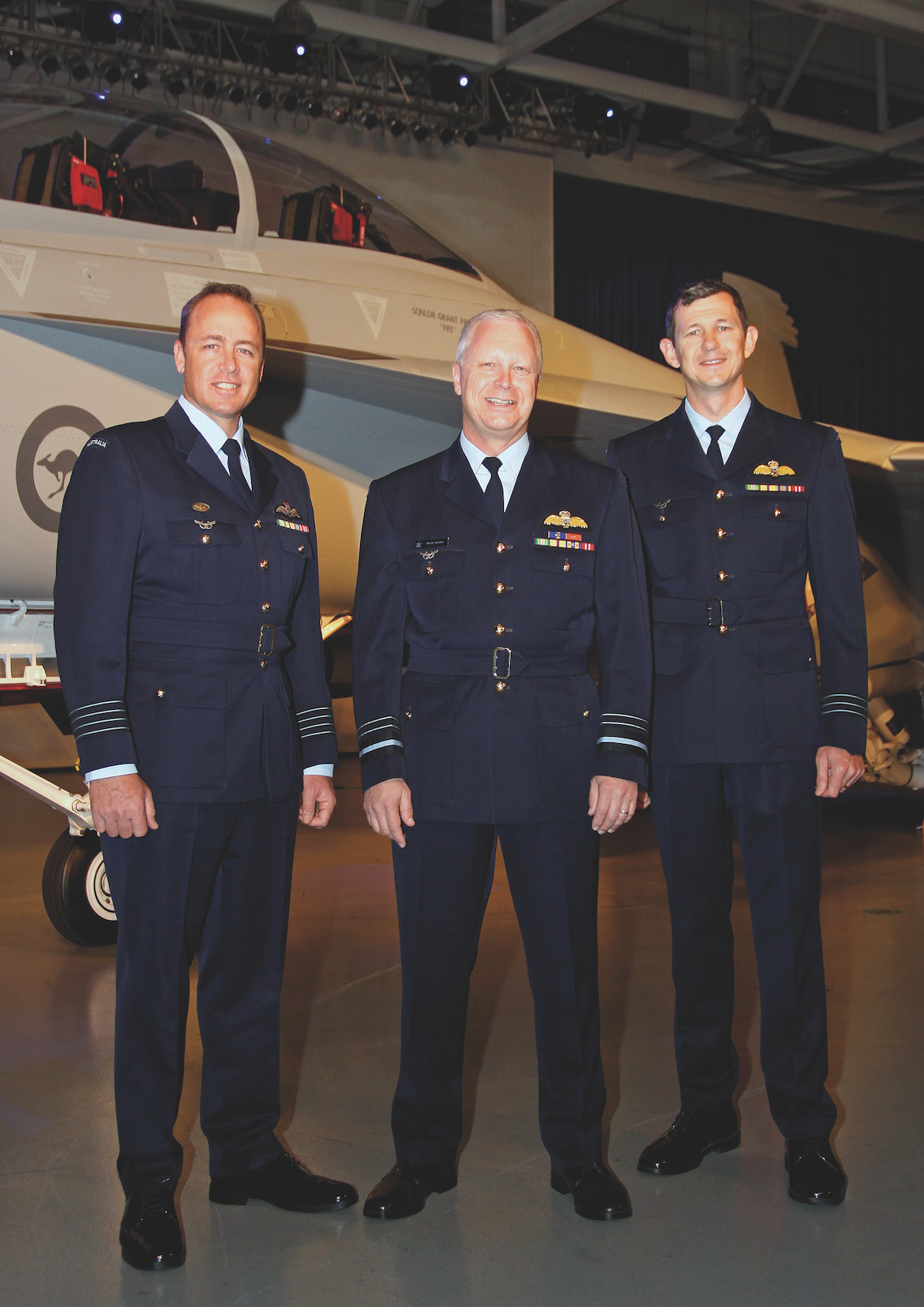
WEAPONS, SYSTEMS & ENABLERS
The RAAF Super Hornet acquisition also includes new weapons, systems and sensors, and for the first time introduces the RAAF to stealth LO technologies.
While Boeing and RAAF officials were reluctant to quantify the aircraft’s low observability capabilities, they state that it will be a significant improvement over current systems in service. Apart from various radar absorbing surface treatments and materials used throughout the aircraft, the Super Hornet features “radar blockers” deep inside the air intakes to prevent radar reflections off the engines’ fan faces. Other details include cerated and overlapping panel edges primarily on the aircraft’s underside on areas such as the undercarriage doors and avionics bays, flush or faceted antennae, and screened apertures and heat exchanger exhausts.
The low observability features gives the Super Hornet a significantly lower cross section in the forward quadrants, although this is heavily compromised through the carriage of external weapons and their pylons.
But stealth is so much more than the aircraft’s shape, construction and materials – it’s also in the way the jet and its systems are operated. For example, the APG-79 AESA radar has a much lower probability of intercept (LPI) than more conventional mechanically steered radars through its ability to focus its beam without emitting revealing “side lobes” of energy which can be picked up by ground and air based systems. Similarly, the radar and the non-emitting ATFLIR EO/IR targeting pod can cue each other towards points of interest.
The Super Hornets will, through the use of their powerful radars and datalinks, provide a force multiplying, almost mini-AEW&C role for classic Hornets in package scenarios, allowing the F/A-18A/Bs to not only remain passive but to also see the much more detailed air or ground picture provided by the APG-79 on their own recently upgraded colour cockpit displays. Similarly, the Super Hornet’s ALR-67(v)3 radar warning receiver (RWR) with its geo-locating ability can work with similar systems currently being fitted to the classic Hornet fleet to provide better situational awareness of hostile radar emitters, although whether this concept is accurate enough to provide GPS coordinates for J-class weapons (JDAM/JSOW/JASSM) to home in on is classified.
Foremost of the new weapons to be acquired is the Raytheon AGM-154C‑1 Joint Stand Off Weapon (JSOW), a stealthy, GPS-guided glide weapon with a 250kg class warhead, an anti-ship capability, and a range of more than 120km when launched at altitude.
Also new to the RAAF will be the AIM‑9X Block I all-aspect air-to-air missile which, when slaved to the pilot or ACO’s helmet cueing system, can be shot “over the shoulder” at an airborne target behind the aircraft. Raytheon will deliver the last Block I AIM-9Xs later this year, after which production in 2010 will switch to an improved Block II with an enhanced target detection device, a datalink and a lock on after launch capability. It is unclear whether the RAAF will take Block II weapons, although this is likely considering the Super Hornet will be in service for at least a decade.
Although both the JSOW and AIM-9X could be integrated onto the RAAF’s classic F/A-18A/Bs, for now, at least, those weapons will remain exclusive to the Super Hornet. Instead, the classic will continue to carry the MBDA ASRAAM missile rather than sinking additional funds into integrating the AIM-9X, and the JSOW will be employed only from the Super Hornets, as the classic Hornets are still slated to operate with the 400km range JASSM – despite that program’s troubles in the US.
“We don’t envisage putting JASSM at this stage on the Super Hornets,” said AIRMSHL Binskin. “We’re fully aware of the issues happening with the program, but we still see it as the weapon that we want to put on the classic Hornets. It will bring a great capability for us, and we’re watching the program as it develops fairly closely, but I’m confident where it’s going at the moment.”
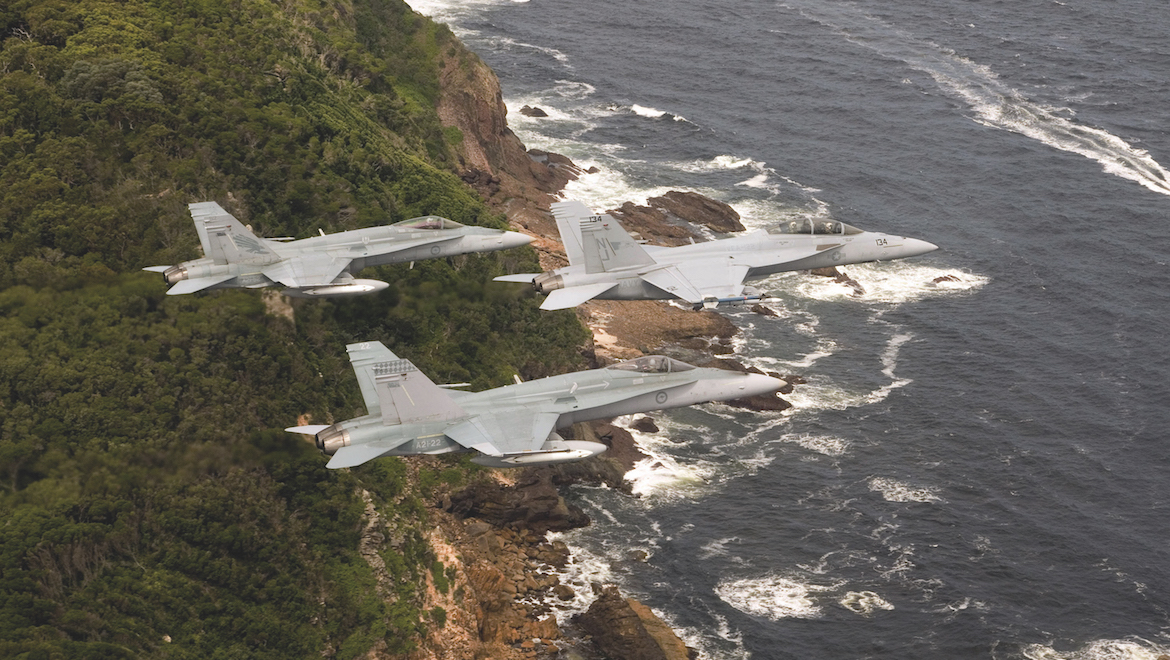
support and upgrades
Details of the Super Hornet support arrangements are scheduled to be decided later this year, but it is likely the RAAF will sign up to a variation of the US Navy and Boeing’s joint F/A-18E/F Integrated Readiness Support Teaming (FIRST) program. While line maintenance will be performed by uniformed personnel, the heavier levels of support will be conducted by a mix of defence and industry personnel, with an aircraft availability guarantee likely to be incorporated in the deal.
In the meantime, the US Navy recently completed its fourth deployment of Block II Super Hornets, and has logged more than 65,000 flight hours to date. The AESA radar, which has no moving parts, is providing a seven-fold reliability advantage over the older mechanically steered APG‑73, and is exceeding the reliability targets set by the Navy.
Further, the RAAF is likely to draw heavily from upgrades provided to US Navy jets which are currently under consideration in Boeing’s Super Hornet ‘Flight Plan’ roadmap which is yet to be fully defined.
Upgrades and enhancement likely to appear in future software and hardware packages will include greater sensor image exploitation through sensor upgrades and higher resolution displays, enhanced electronic attack modes for the radar, advanced IFF modes, datalink upgrades, new weapons, possibly the carriage of air launched UAVs or the Miniature Air Launched Decoy (MALD) and its jammer derivative (MALD-J), more powerful F414 “EPE” engines, and the addition of a centreline auxiliary tank-mounted infrared search and track (IRST) sensor which is currently under development by Lockheed Martin and Boeing.
“The capability of the IRST is awesome,” said Boeing’s vice president of F/A-18 and EA‑18 programs Bob Gower.
“As threats evolve in the future, the IRST (will) integrate with the AESA radar and have the capability to do a weapons launch in a totally passive mode.”
Boeing officials added that the AESA radar “doesn’t have all the cards in the holes yet” and that “there is lots of growth in it”, and suggested the radar had already demonstrated an operational electronic attack capability to disrupt hostile radars and other electronic systems. In the future, it is planned to include an anti-cruise missile electronic attack capability.
For now though, AIRMSHL Binskin added that the RAAF is focused on getting the jet into service in its current configuration, and that no decision has been taken on IRST or any of the proposed Flight Plan capabilities for the RAAF.
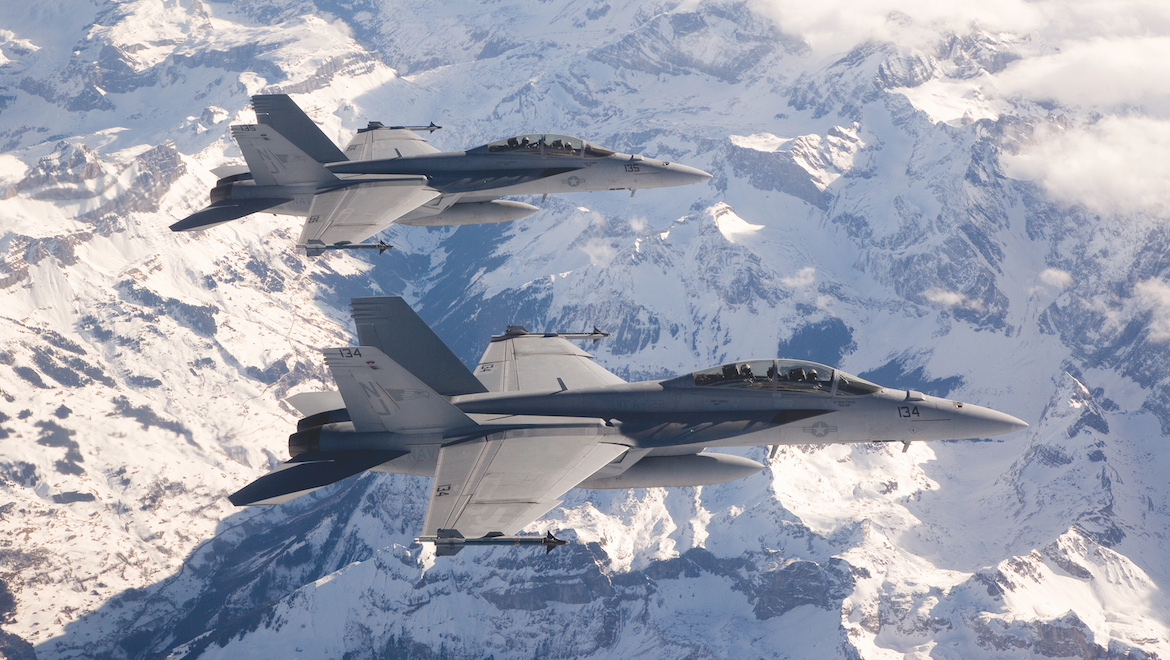
BULLISH
Boeing is bullish about other foreign sales prospects for the Super Hornet, but points out that many of these decisions often have a political element beyond the capability of the aircraft. The first country to decide will be Brazil which is due to make a decision in August. Other active campaigns include India and Denmark, while Canada, Greece, Qatar, Japan and Malaysia remain possibilities.
Less likely appears to be a follow-on sale to Australia, something that has been mooted should there be further delays with the JSF. “No! Sorry Bob, but no,” AIRMSHL Binskin emphatically told Australian Aviation while laughing and turning to Boeing’s Bob Gower.
But with the Super Hornet’s advanced systems, sensors and weapon, proven reliability and established support model, Australia’s decision to “bridge” the gap to the JSF and to replace the F-111 with the F/A-18F looks to be a realised as a prudent one.
VIDEO: A July 2009 video outlining the RAAF’s F/A-18F Super Hornet capability from the air force’s YouTube channel.
This story first appeared in the August 2009 edition of Australian Aviation. To reach more stories like this, become a member here.












